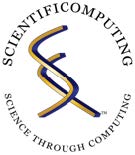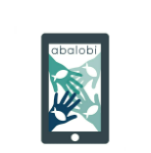A patent provides a useful 'currency' for trade in the knowledge economy defining the scope of a particular invention and associating with it an exclusive right to exploit the invention in a particular country for 20 years. You can learn more about patents here. It is important to contact RC&I before making any public disclosure of an invention as failure to do so could cost the researcher a possible patent.
RC&I manages the filing and prosecution of patent applications on behalf of UCT and appoints the patent attorney to prepare the patent specification. We have a budget to pay for IP protection, so it will not come from your research funds!
There are three key requirements for patentability:
- Novel - this means that the invention is new and has never been disclosed publicly before (even by the inventor!), e.g. through journal publications, conference presentations and posters, online web postings or thesis examination.
- Inventive - this is perhaps the most difficult aspect as it is subjective. Essentially it means that the invention is not obvious to a person “skilled in the art” (generally a technician who would typically be carrying out routine tasks).
- Useful - this means that there is 'industrial' application and is generally easily met.
There also needs to be some commercial potential, or social benefit for UCT to invest in the patent protection.
Start the process by downloading, completing and submitting an Invention Disclosure Form to us.
Learn more about the patenting process in the UCT Inventors Guide.
Designs can be registered based on the aesthetic attributes of an object (i.e. its shape) and/or its functional attributes. A running shoe can have the pattern of its sole registered as an aesthetic design and the fact that the pattern provides non-slip properties, registered as a functional design.
Start the process by downloading, completing and submitting a Design Disclosure Form to us.
RC&I manages the registration and maintenance of trade mark applications that relate to the inventions or products associated with research outputs, or to the spin-off companies that may commercialise them. The Registrar’s Office is responsible for trade mark protection at the University level, e.g. for names like “GSB”, or “Food & Connect” as well as those of research groups. RC&I funds product-related trade marks, the Registrar’s office funds university marks and research grouping fund their own trade marks. Importantly research group related marks are filed in UCT’s name as these different internal groupings are not legal entities, also they remain available to a grouping if an individual leaves the university.
For a trade mark to be eligible for registration, it needs to be both distinctive (not descriptive) and must be in use in commerce. Once granted (examination takes about a year in South Africa), a trade mark certificate is issued which grants the owner exclusive rights to use the trade mark. A trade mark identifies the services or goods of one person/entity and distinguishes it from the goods and/or services of another person/entity in one or more of 45 different trade mark classes.
Additional information relating to trade marks is provided in the Trade Marks Guide and RC&I can be contacted directly to assist you with registration of a trade mark.

|

|

|
Copyright is a form of intellectual property protection which does not need registration. The creator of an original work automatically becomes the owner of copyright in that creation at the moment that the work is written down on paper or recorded in some other fixed format in a material form as a tangible means of expression. Copyright is automatically granted in South Africa. Also, through the Berne Convention, an international agreement for the protection of literary and artistic works all countries signatory to the Berne Convention will respect the copyright in their own country. This is particularly important in maintaining protection of material that is on the web and made available to people in other countries.
To inform people that your work is protected by copyright you should include a copyright notice somewhere on the document. This should contain the symbol © (or the word Copyright), the name of the owner of copyright or publisher to whom the copyright is assigned and the year the work was first created. For example: © University of Cape Town 2023. Note that it is not a requirement to mark your work in this way in order for the copyright to be valid.
Software is also protected by copyright but it may also be licensed via various open access licenses to promote code reuse and development. Occasionally software can be protected by patenting in addition to copyright, where the application is novel and inventive and additional requirements are met, such as a it resulting in a technical effect (e.g. controlling the timing of an engine).
Start the process by downloading, completing and submitting a Software Disclosure Form to us.
